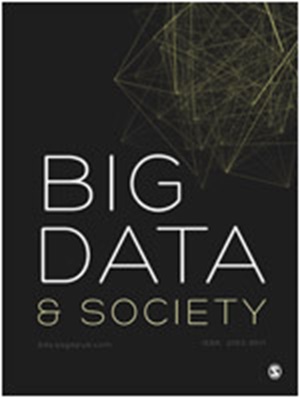工作场所的算法与霸权:意大利电视平台的谈判设计与价值观
IF 5.9
1区 社会学
Q1 SOCIAL SCIENCES, INTERDISCIPLINARY
引用次数: 0
摘要
近年来,一些学者强调了仔细研究算法模型设计的实践和材料设置的必要性,以便揭示其生产和部署过程背后的工作活动和社会文化结构。利用多地点人种志,本文调查了互联网电视平台企业环境中的技术工作者的实践,不同专业人士之间的等级关系,以及这些个人如何构建算法,并通过他们的活动为这些系统的制定做出贡献。研究结果强调了技术工作的等级组织和操作人员对商业客户强加的目标以及内部和外部控制形式的从属关系。具体来说,它揭示了科技工作者的次等性是如何在物质上和话语上被建构起来的,以及施加在他们身上的因果性、倾向性和促进性权力的形式。在这种环境下,技术工作者对算法的设计和意义产生了摩擦、谈判和隐藏策略,从而显示出它们的文化、偶然和多重构成。在吉登斯的结构/代理循环框架内,展示了日常工作活动和关系如何促进工作场所霸权安排的再生产,以及这些霸权安排如何成为算法生产的核心,从而在这些系统的框架、构建和实施中发挥关键作用。本文章由计算机程序翻译,如有差异,请以英文原文为准。
Algorithms and hegemony in the workplace: Negotiating design and values in an Italian television platform
In recent years, several scholars have highlighted the necessity to scrutinize the practices and material settings in which algorithmic models are designed, in order to unpack the working activities and socio-cultural constructs underlying their production and deployment process. Drawing on a multisited ethnography, this paper investigates the practices of tech workers within the corporate environment of an internet television platform, the hierarchical relationships between different professional figures, and how these individuals frame algorithms and contribute to the enactment of these systems with their activities. Findings highlight the hierarchical organization of tech work and the subordination of operative figures to the goals imposed by business clients and to both internal and external forms of control. Specifically, it emerges how the subalternity of tech workers is materially and discursively constructed and forms of causal, dispositional and facilitative power exerted on them. In this environment, frictions, negotiations as well as concealing strategies by tech workers regarding the design and meaning of algorithms emerge, thus showing their cultural, contingent and multiple composition. Within the framework of Giddens’ structure/agency cycle, it is shown how everyday working activities and relationships contribute to the reproduction of hegemonic arrangements in the workplace, and how these hegemonic arrangements are at the core of algorithmic production, thus playing a key role in the framing, construction and enactment of these systems.
求助全文
通过发布文献求助,成功后即可免费获取论文全文。
去求助
来源期刊

Big Data & Society
SOCIAL SCIENCES, INTERDISCIPLINARY-
CiteScore
10.90
自引率
10.60%
发文量
59
审稿时长
11 weeks
期刊介绍:
Big Data & Society (BD&S) is an open access, peer-reviewed scholarly journal that publishes interdisciplinary work principally in the social sciences, humanities, and computing and their intersections with the arts and natural sciences. The journal focuses on the implications of Big Data for societies and aims to connect debates about Big Data practices and their effects on various sectors such as academia, social life, industry, business, and government.
BD&S considers Big Data as an emerging field of practices, not solely defined by but generative of unique data qualities such as high volume, granularity, data linking, and mining. The journal pays attention to digital content generated both online and offline, encompassing social media, search engines, closed networks (e.g., commercial or government transactions), and open networks like digital archives, open government, and crowdsourced data. Rather than providing a fixed definition of Big Data, BD&S encourages interdisciplinary inquiries, debates, and studies on various topics and themes related to Big Data practices.
BD&S seeks contributions that analyze Big Data practices, involve empirical engagements and experiments with innovative methods, and reflect on the consequences of these practices for the representation, realization, and governance of societies. As a digital-only journal, BD&S's platform can accommodate multimedia formats such as complex images, dynamic visualizations, videos, and audio content. The contents of the journal encompass peer-reviewed research articles, colloquia, bookcasts, think pieces, state-of-the-art methods, and work by early career researchers.
 求助内容:
求助内容: 应助结果提醒方式:
应助结果提醒方式:


